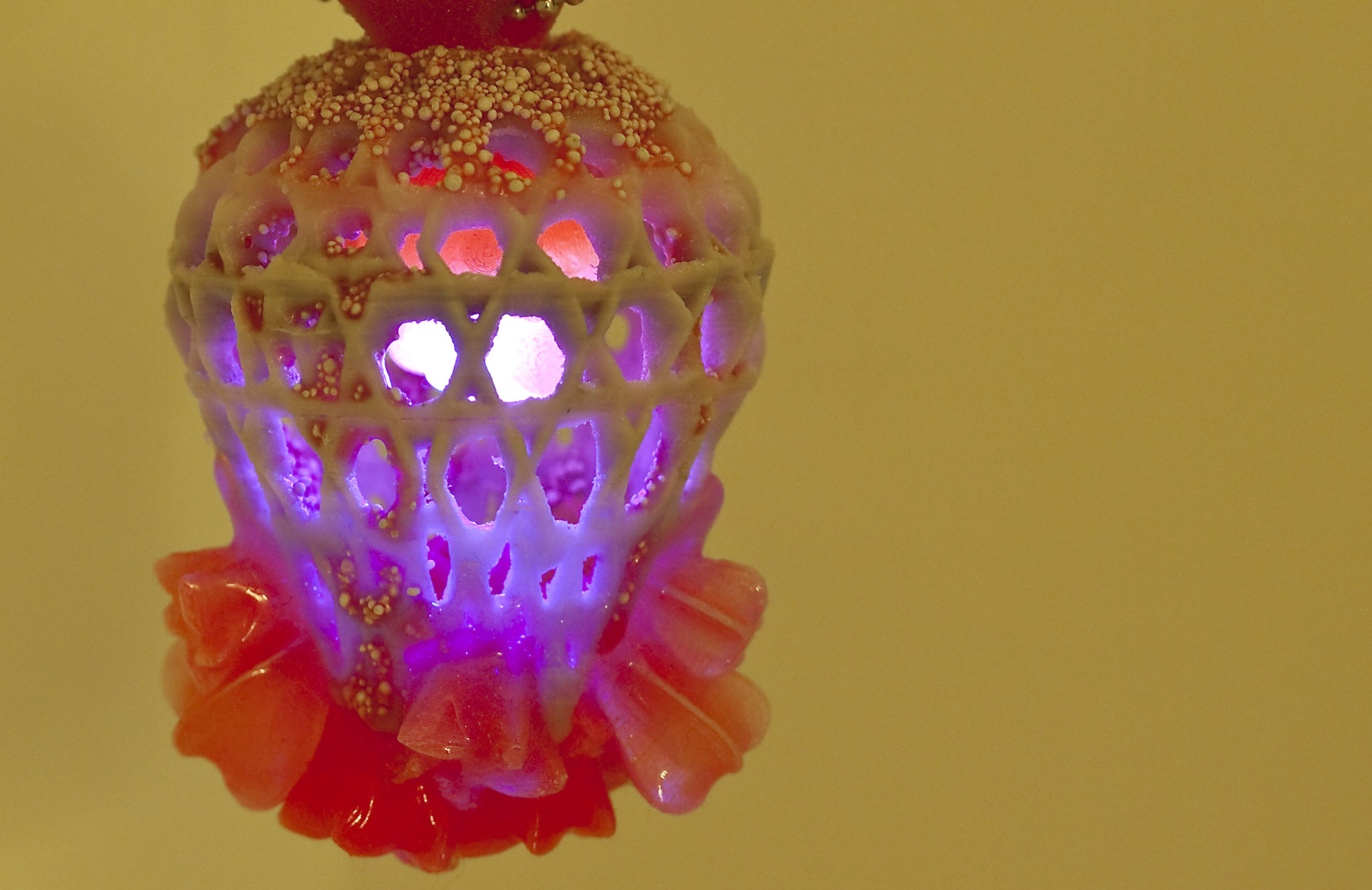Two days ago I finally finished assembling my Filastruder and Filawinder. There were a few last minute tweaks that became necessary once I had decided on my final setup and positioning of the assembly in my studio, such as sourcing a longer cable for the Filawinder sensor and making a stand for the Filastruder to sit on. I had initially planned to go for a fully wall-mounted vertical setup, but the Filastruder is a reasonably heavy piece of kit, and as I don’t quite trust the strength of the walls in my studio, I ended up going with this 45 degree angle tabletop assembly instead, designed to fit the enclosure I am using. Going vertical should always be considered as the superior option, because of the way gravity aids the extrusion process, but you have to work with what you’ve got. Setting up the Filastruder on my workbench and the Filawinder on another workbench opposite gives me enough room between the two machines to drop the filament in a generous loop once extrusion starts, with the Filawinder sensor placed on the floor between them. The sensor cable that was included in the kit was not long enough for this to work (and as 3mm filament needs a slightly longer run before going into the Filawinder, I am guessing it would not be for most people extruding this diameter), but I sourced a 15ft version and the appropriate connectors, which should hopefully see me through all future eventualities.
With everything in place it was finally time to turn on the ‘struder and do the initial purge! Excitement mixed with apprehension as I turned on the heater for the first time and watched the numbers on the display creep up, eventually reaching the target temperature of 171C. At this point it is really important to give the Filastruder enough time to heat up thoroughly – anyone who has ever used an enamelling kiln will know this as ‘soaking’. While the thermocouple might be displaying the target temperature, this is only measured on a tiny part of the assembly, and it can take anything from an additional 10-30 minutes for that temperature to reach other areas of the machine. Turning on the motor before everything has been thoroughly heated through can lead to disastrous results – in extreme cases even barrel deformation – as the plastic is not liquid enough to let the screw turn freely, putting strain on the motor and other mechanical components. After about 30 minutes I finally felt comfortable enough to turn on the motor. The PLA started shooting out of the barrel almost immediately, initially as very liquid blobs of hot plastic and eventually as filament. During the initial purge, this will be filled with metal particles and other debris, and it could take up to 8 hours to clean out the barrel completely. This gives you however plenty of time to adjust the temperature settings to suit your material, and really fine-tune the diameter of your filament. In my case, it transpired that 171C was far too high for the PLA I am using (Natureworks Ingeo 4043D) and eventually I settled on 155C which gave me a relatively stable output of 2.7-2.8mm filament.
Next: getting the Filawinder to work. 3mm diameter filament poses a further challenge for the winder, as it is a lot stiffer when it comes out of extrusion and thus harder to wind. My initial attempts to get it to work failed miserably, mainly because I had followed the assembly instructions to the letter and cut my length of PTFE tubing in half, making it too short to work in my setup. This resulted in increased strain on the spool which meant the motor was not strong enough to pull the filament and kept getting stuck. Luckily I still had the other bit of the tubing, and a bit of kapton tape later a full length PTFE tube means that the Filawinder is now working like a charm. This is really important for getting a consistent diameter – even moving the sensor during winding can mess up the fragile dynamics that exist between the extruder and winder and be the difference between producing excellent filament and something ready for recycling. After six hours my initial purge was complete and my first spool of filament all wound up:
 Of course, its contents will now be going in the bin as the contaminants mean the material is unsuitable for putting through a 3D printer or re-extrusion, but I’m still proud I made it this far and now have a working setup to extrude my own custom filament. More to follow soon…
Of course, its contents will now be going in the bin as the contaminants mean the material is unsuitable for putting through a 3D printer or re-extrusion, but I’m still proud I made it this far and now have a working setup to extrude my own custom filament. More to follow soon…

You must log in to post a comment.